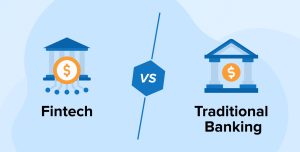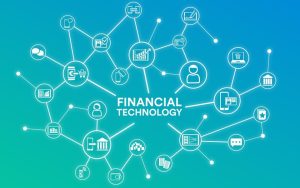New technologies, collectively known as “financial technology” (FinTech), have transformed the financial industry. FinTech refers to the use of digital tools and platforms to provide financial services in new and often better ways. These technologies include mobile banking apps, digital wallets, investment platforms, peer-to-peer lending services, cryptocurrency exchanges, and more. These products are faster, easier to use, and more accessible, but they have also raised concerns among consumers about the security of FinTech. This concern is real, especially as more people store their money and personal information on digital websites. To understand the security of FinTech, you need to understand the technology behind it, the risks involved, and the measures taken to protect people.
How FinTech Platforms Handle Private Data
The storage and use of personal and financial information is a major concern about FinTech. FinTech platforms sometimes ask users for a lot of private information, such as their bank account number, social security number, salary information, and spending habits. Most FinTech companies use encryption to keep this data safe. Encryption converts data into a code to prevent unauthorized access. It is one of the most reliable ways to protect data. Many platforms also use the Secure Sockets Layer (SSL) protocol and multifactor authentication to further enhance security. Even with these measures, there is still a chance of data breaches because information is stored and transmitted digitally.
Digital Financial Landscape and Cyber Threats
As FinTech grows, so does the risk of cybercriminals attempting to exploit its vulnerabilities. Phishing, identity theft, ransomware, and virus infections are all common cyberattacks that can harm FinTech users. Hackers often look for vulnerabilities in software systems or use social engineering to trick users into providing login credentials. Financial platforms are particularly vulnerable to attacks because they handle money and important information. Even the most secure systems can be at risk if people do not follow proper security practices or if companies do not regularly update their security measures. These risks highlight the importance of both platforms and users being aware of them.
How Users can Protect Themselves
Fintech platforms have gone to great lengths to protect their users, but it’s just as important for customers to protect themselves. You can significantly reduce the risk of cyberattacks with simple measures, such as using secure and unique passwords, enabling two-factor authentication, and not opening suspicious emails. Users should also keep their devices up to date and avoid using public Wi-Fi networks to access their bank accounts. Many data breaches are not caused by system failures but by human error or negligence. To ensure the overall security of the fintech sector, it’s crucial to educate customers about the safest ways to manage their money online.
Open and User-controlled Data
Being open and honest is an important part of building trust between fintech platforms and consumers. Users have the right to know what data is collected, how it’s used, and who sees it. Good fintech companies make their practices easy for users to understand by providing transparent privacy policies and user agreements. Some platforms also allow users to control their data, allowing them to choose not to share it with others or to opt out of specific services. The concept of “data ownership” is becoming increasingly important in digital banks, as more people want services that respect privacy and are completely open.
Comparing FinTech Security with Traditional Banks
Many people believe that traditional banks are inherently safer than fintech platforms. Banks are generally protected by the government, including a deposit guarantee scheme, and they have been around for a long time. However, fintech companies, especially those that work with licensed banks or adhere to strict regulations, can offer security that is equal to or even better than that of traditional banks. It is true that many traditional banks are increasingly using fintech technology to modernize their services. While people have a lot of trust in big banks, it is crucial to evaluate each fintech platform on its security, how well it complies with regulations, and what customers say about it.
Conclusion
Fintech has made the financial world easier and more innovative by making services faster, easier to find, and easier to use. But with these advantages come new security concerns. Most well-known fintech companies take cybersecurity very seriously and use advanced defense mechanisms, but because these platforms are digital, there are always risks. Not only technology, but also regulatory oversight and user accountability are crucial to fintech safety. By understanding how fintech works, staying informed about potential risks, and developing good digital habits, users can feel more confident using fintech. Fintech can ultimately be safe, but everyone needs to work together to ensure it remains secure.
FAQs
1. Are fintech apps safe for banking and investing?
Yes, many fintech apps are safe, especially those that are regulated and use strong security features like two-factor authentication and encryption. Always do your research before using a platform.
2. Can hackers breach fintech platforms?
Hackers can hack fintech platforms, just like any other digital system. However, most platforms use advanced technology to prevent hacks and act quickly when they do occur.
3. What should I do if I think a fintech website is a scam?
You should immediately contact the company’s customer service, change your password, and closely monitor your bank account for any unusual activity. By reporting this immediately, you can limit the impact.
4. Do regulators treat fintech companies the same as regular banks?
Some fintech companies are regulated, especially those that offer lending or investment services. Because the rules vary by country and by type of service, it is important to check this.
5. How can I stay safe when using fintech services?
To limit the risk, it is best to use strong passwords, enable two-factor authentication, avoid public Wi-Fi networks, keep your apps up to date, and only use platforms that you trust and have good reviews.




